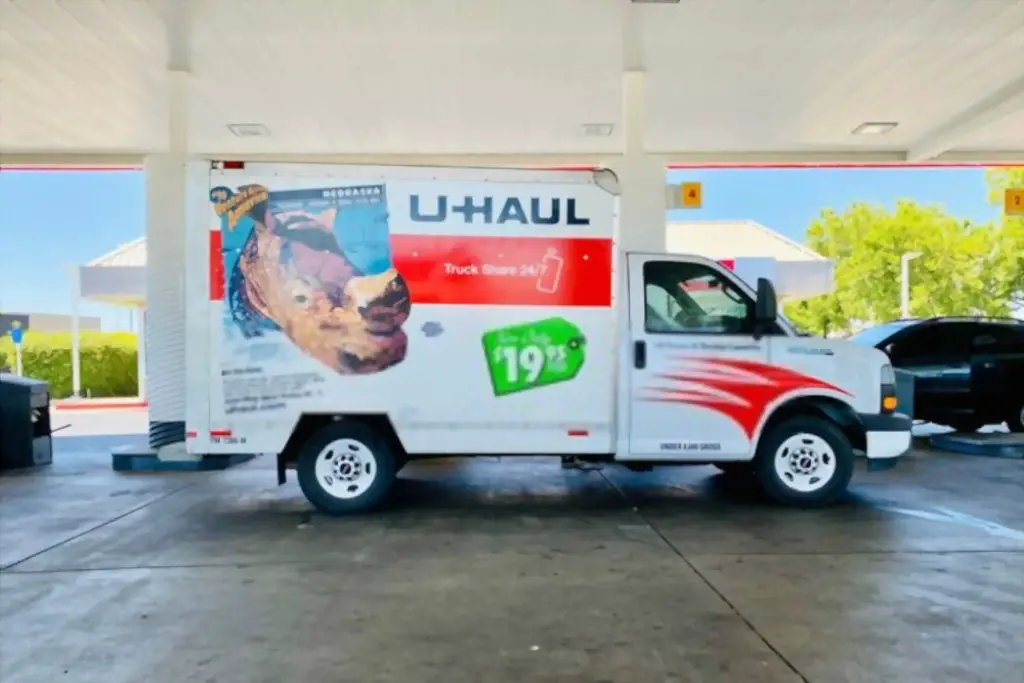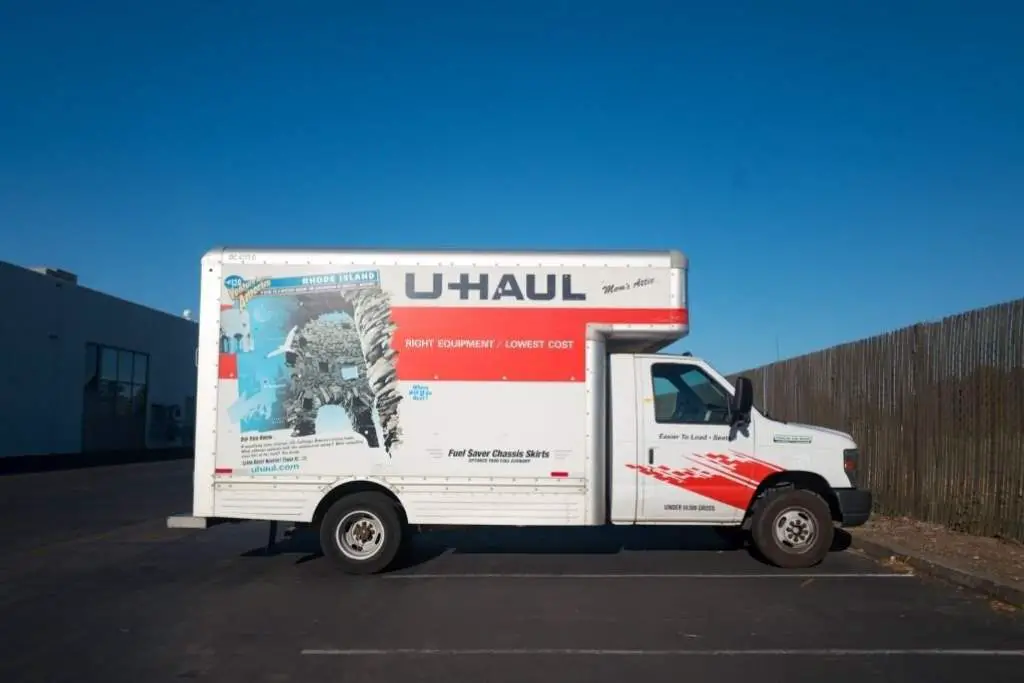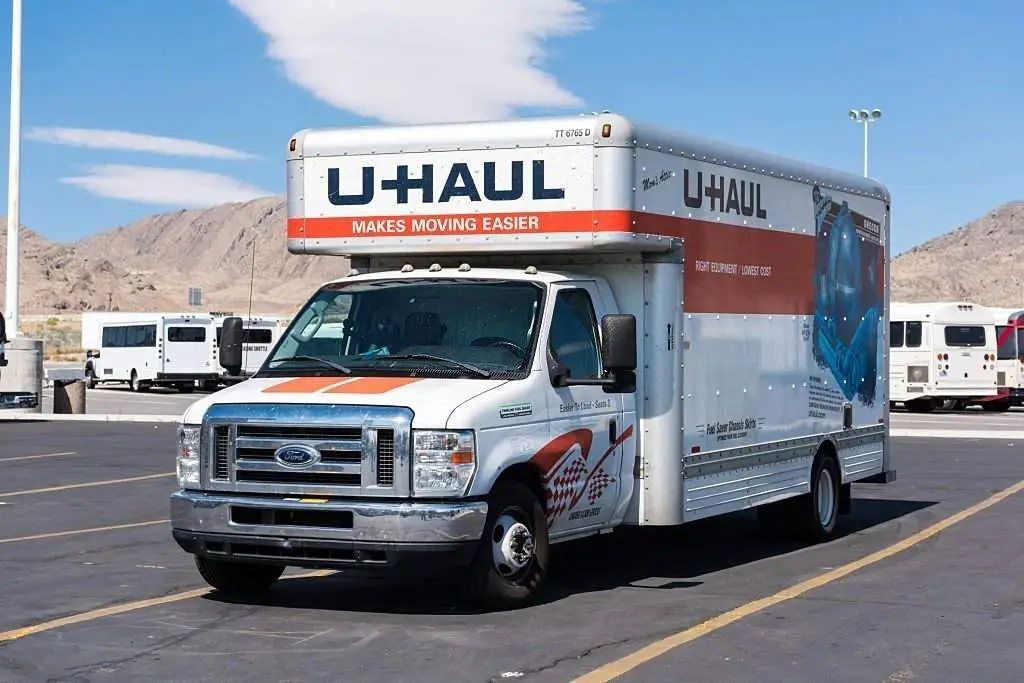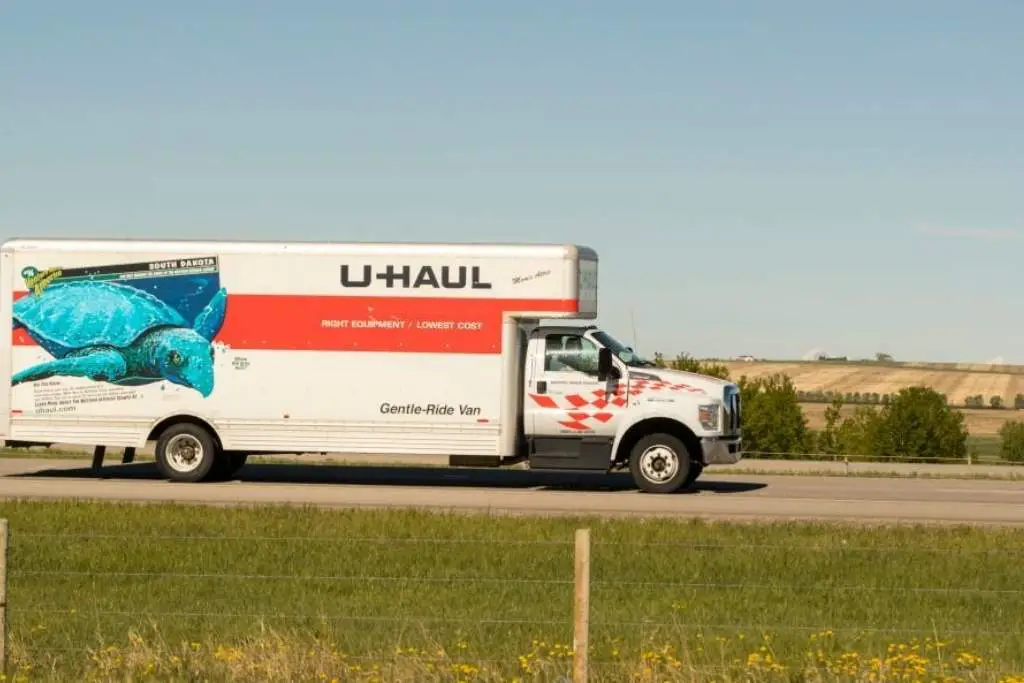Moving can be a nightmare; you’ve got to pack all your stuff into boxes, hire a truck, and ensure that the U-Haul will be big enough to fit all your belongings. Then, you have to unload it all at your new place. Just the thought of it can make you feel like staying put forever.
Some U-Haul trucks are four-wheel drive. Most U-Haul rental dealers offer pickup trucks with four-wheel drive for customers who need a little extra traction. The options range from the pickup to the 26 feet (7.92 meters) truck made for large loads.
In the following paragraphs, I’ll discuss the rental options you get at a U-Haul dealer. I’ll also discuss the pros and cons of a truck with four-wheel drive.

Why U-Haul Trucks Are Four Wheel Drive (4×4)
U-Haul is an American moving and storage rental company with headquarters based in Phoenix, Arizona.
The company offers do-it-yourself moving and storage services and full-service moving options. The firm has over 21,000 truck rental locations in the United States and Canada.
When hauling a load from one place to another, it’s important to have a truck that can handle the job; your moving vehicle needs to be strong enough to take whatever comes its way. That’s why the ever-popular U-Haul trucks are four-wheel drive (4×4).
The trucks are designed to carry large loads of cargo over vast distances. They are built for heavy-duty work while handling all weather conditions, including rain and snow.
If you’ve ever tried driving through a storm or up a steep hill in a car without 4×4 capabilities, then you know how important good traction can be. Without good traction in bad weather conditions, your car will slide around on slick surfaces or lose stability when going uphill.
Since U-Haul trucks need to handle a lot of weight over long distances and sometimes rough terrain, a four-wheel drive (4WD) system is handy. But what are the key advantages of a four-wheel-drive vehicle?
In the next segment, let’s look at the advantages and disadvantages of a four-wheel-drive truck.
Why Is a Four-Wheel Drive Truck Better?
Four-Wheel drive trucks are better because they provide increased traction and power. These are two of the most crucial benefits of four-wheel-drive vehicles. A four-wheel-drive system uses a transfer case to send power to all four wheels, not just the front or rear.
You’ll need more power as you climb a steep hill or navigate rough terrain. Luckily, 4WD vehicles provide that additional power.

Here are some advantages of a 4WD truck:
- Better traction. Four-wheel drive trucks provide more traction than standard vehicles. A 4WD vehicle is better suited to hazardous driving conditions, like ice, snow, and other situations where control may be difficult. The system improves traction and handling by utilizing all the wheels.
- Improved cornering. Furthermore, cornering is better, as power is equally distributed among all of the wheels, reducing the strain on each.
- Enhanced grip. The extra body weight provides a better grip off-road.
Disadvantages of a 4WD truck:
- Higher fuel consumption. The additional power and weight of the 4WD system consume more fuel overall.
- Braking distance. You need a longer braking distance to bring a large, heavy vehicle to a complete halt.
- Driver overconfidence. Due to the truck’s superior handling and control, especially in hazardous conditions, overconfident drivers can be reckless and cause accidents.
Other articles about U-Haul you might be interested in reading:
How Big Is a U-Haul Truck?
U-Haul truck rentals come in a variety of sizes and capacities. The smallest truck you will probably hire if you’re only moving a few items is 10 feet (3 m) long. If you need to move a lot more stuff, you’ll need to rent one of the larger trucks from 15 feet (4.5 m) to 26 feet (7.92 m) long.
Picking the right truck is vital to completing a smooth and safe move. Moving can be frustrating if you rent a small truck. Either you will have to unpack the truck entirely to exchange it for a more spacious one or get another suitable transportation for items too large for the vehicle.
All this is costly and inconvenient when moving long distances. Alternatively, you can also haul a cargo trailer to avoid this problem.
With this knowledge, how do you choose the right truck size?
Keep reading to find out.
How To Pick the Right U-Haul Moving Truck

U-Haul is an excellent option for people who need to move, but it’s vital to use the right truck for your needs. Here’s how to pick the right one.
Picking the right U-Haul moving truck can be a tricky process. You want to ensure that you have enough space to haul everything you need to move, but you don’t want your truck to be too large or heavy for the trip.
First, take a look at what you want to move. A 10 ft (3m) truck will be sufficient when transporting a small amount of furniture and other items. For larger moves, go with a 15ft (4.5m) or 20 ft (6m) truck.
While making your decision, there are a few things you’ll want to keep in mind.
The most important thing is that the moving truck suits your needs. Your mental checklist should include the following questions:
- How much stuff will you be moving?
- Do you have any unique specifications or features that are important to you?
- What kind of gas mileage do you want?
- What’s the price range that works best for your budget?
Once all that is taken care of and you know what kind of moving truck suits your needs, you can begin looking at models. Here are some popular options from U-Haul.
Below is a guide to help you decide on the truck you’ll need. Remember that these are estimates, not exact figures.
| No | Truck Size | Home size |
| 1 | 10 ft (3 m) | Studio Apartment |
| 2 | 15ft (4.5 m) | Two Bedrooms or less |
| 3 | 20 ft (6 m) | Two -Three Bedrooms |
| 4 | 26 ft (7.9 m) | Four or more Bedrooms |
Conclusion
Most U-Haul trucks are four-wheel drive, thereby ensuring you get to your destination in a safe and timely manner. The four-wheel-drive system of the trucks is a feature that helps drivers navigate slippery roads and adverse weather conditions easily.
Four-wheel drive technology is particularly beneficial when getting to your destination under bad weather conditions, including rain and snow.
